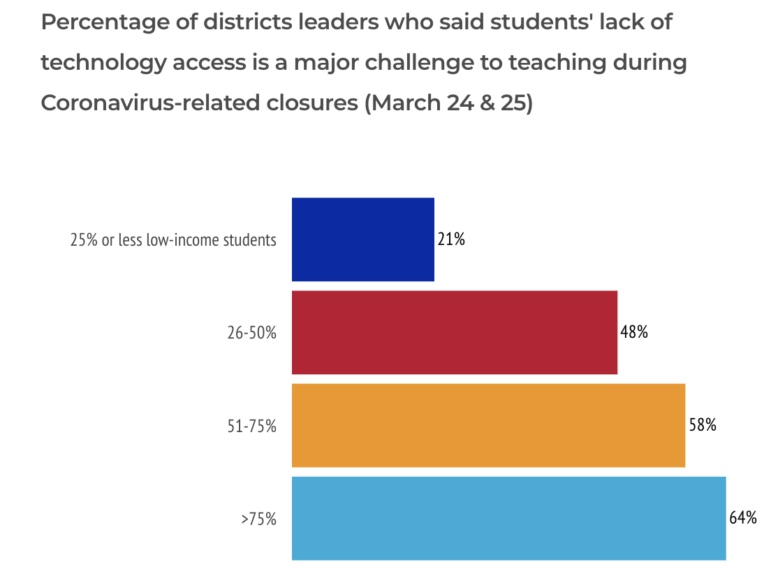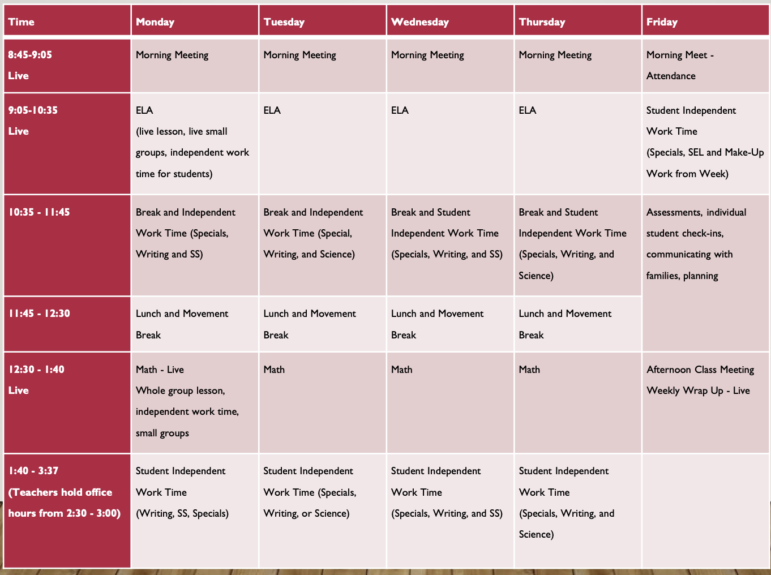Kendra Freeman doesn’t know what she should do.
When the Lansing School District decided on July 17 it would move to fully virtual learning for the first marking period between Aug. 31 and Nov. 6, Freeman, a mother of a 9th grader and kindergartner, was left wondering how she was going to make it work.
“It has been very tough as far as moving online,” Lansing School District parent Kendra Freeman. “I have no answers as to how it is all going to work and look like.”
Freeman, who is a mother of two, with one starting at Lansing High School in a few months and another beginning kindergarten, says how it can be difficult for this adjustment for her own kids.
“How do you teach kindergarten online and force them to sit in front of a computer most of the day as they are describing,” said Freeman. “Yes they say there will be breaks etc., but we won’t know what it is all going to look like until we actually get the training in.”
Freeman is among multiple families having to adjust to this struggle. The Lansing School Board has held multiple calls and zooms where they allow parents and other members of the community to ask any questions that they feel are necessary to set ease to parents.
One issue that the board can’t really reach to are parents who can only do so much when they have to work.
Freeman, who is a single parent, is one example of how working parents are affected during this pandemic.
“It does affect me in regards to work because I work for Walmart,” said Freeman. “Typically our hours vary, we open at 5a.m. and leave no later than 6 p.m. I’m very lucky at the moment that our particular store has a ship from the store running on the third shift, so they are working with me and allowing me to be home with my kindergarten son during school hours.”
Even with this pandemic causing all K-12 parents to adapt to online learning, it’s not a new method of teaching and learning Classes have been online for the last 10 years with not only college, but even in high school.
Education professor Patricia Edwards, who has taught at Michigan State University since 1989, said how the move to online is nothing incredibly new for people to get used to.
Colleges and high schools have been teaching online for a bit now. Virtual classes and academy’s have been a popular choice for students in recent years, and Edwards says this change is nothing incredibly new.
“In Michigan, it might be new to some people, but online teaching has been a thing for a while.”
Change is a common gateway for what’s happening in 2020. But Edwards, said that change is something that is inevitable.
“It’ll be a mind change,” said Edwards. “Everything is attitude. If you think everything is bad, then that’ll be the mindset for you.”
One of the things Edwards tries to debunk is being negative and having a pessimistic mindset during this pandemic.
“You shouldn’t let the negatively live rent free in one’s head,” said Edwards. “I would say to young people, they need to spend more time on how they will work and function in this new norm.”
Edwards used the idea of Usain Bolt and beating him in a race as an example. If someone thinks they can’t beat Usain Bolt, then they will never have the ability to based on their mindset, Edwards said.
“It’s like the little engine that could and you can do it if you say you can,” said Edwards. “You either publish or you perish.”
Dorinda Carter Andrews, the chairperson for the Department of Teacher Education at MSU, said online challenges could include the inability for the teacher to express their body language in the classroom.
“I think in a virtual environment, you lose strategies that they implement in person and you are unable to do that now,” said Andrews. “Simple things like rotating in your classroom and the energy students get from the physical presence and how they vibe off that for both teacher and student, you lose a sense of teacher’s body language.”
With the new move to online, students and teachers will truly only see each other’s chest and up. Body language is a teaching technique that seems like it wouldn’t have an impact, but it allows kids who are not reading instructions to read hand gestures and follow all kinds of movements.
Andrews also said how one of the biggest setbacks with schools going online, is the fact their undergrad clinicals reach a roadblock.
“The biggest challenge is with the interns doing student teaching,” Andrews said. “Most schools will let outside students come and shadow, but some won’t have any.”
The undergrad program usually has students go in and do some sort of student teaching for K-12, but with the COVID-19 pandemic, students won’t have the same accessibility as they have in previous years.
However, even with the hardships, students will still be able to participate, but through a virtual platform.
“Clinicals are different from College of Medicine as they are essential employees,” Andrews said. “People don’t think of a student teacher as an essential employee. Even though you can’t do a medical clinical virtually, you can do an educational clinical virtually.”
Andrews said she fears however, that one of the biggest setbacks students K-12 will have going online, is the social-emotional impact.
“The feeling of isolation and anxiety will be on the rise, probably even depression,” Andrews said. “We need as educators to be cognitive of those signs and we need to talk to parents on how to recognize mental health components. Typical kids who wouldn’t struggle with it might struggle with it now.”
One of the largest looming questions is how special education students will also be able to adjust during the pandemic, with there being such a range of learning disabilities including cognitive, emotional and physical.
“It overwhelms me to think of how parents who will have children at home with special needs,” Andrews says. “Districts are not prepared and it’s going to be a social experiment. Families don’t know how to respond to it.”

Associate professor in the College of Education Christine Greenhow is familiar with special education and what is likely to come about it.
“What I’ve been seeing has been talking about when teachers first move to online, the U.S. Department of Education loosed up on some special ed requirements,” Greenhow said. “Teachers could teach online and not need to meet the IET needs for students.”
One of the biggest difficulties that comes along with these students moving online, and the parents for that matter, is the adjustment from being surrounded by so many peers, to having little to no social interactions in person.
“Special education students and their parents struggled a lot once going online,” said Greenhow.
Greenhow also discussed the issue of lack of technology and says how challenging it can be
“Many students didn’t have internet access at home or a computer,” Green how said. “Students not having access online made it much harder during COVID-19.”

Affect on teachers
While the students are of course one of the main stakeholders in the move online, teachers are just as important with the transition.
For a teachers perspective, it can be a very different experience, very isolating and very challenging, said Greenhow.
“They spend their whole day for a 20 min break, and you take away the school building and interaction with kids and it can be very isolating and challenging,” said Greenhow. “Any teacher with little experience first thought is to just take the textbook and put it online.”
Greenhow said that over March, many teachers didn’t have internet access at home or a computer, and that continued to take a toll on teachers.
A district with a plan
The East Lansing Public School District has plans to accommodate all parents, teachers and students.
Cassie Fromson, administrative assistant at Glencairn Elementary, said how the new instruction includes a plethora of features.
“Each course will have synchronous and asynchronous instruction, with content able to be accessed once the lesson is over,” Fromson said. “Both daily instruction and learning will have screen and non-screen time weekly assignments.”
One of the major concerns that educators and parents worried about was how schools would be able to adjust to special education students. Fromson says that there is a plan.
“IEPs and 504 plans will be reviewed and adjusted as needed,” Fromson said. “Families will have case managers contact them when needed.”
ELPS will also include such features like more time with teachers and classmates and support from teachers through coaching, collaboration and professional learning.

But the most important part of the move online for the ELPS, is to make sure students and staff are safe during these tough times.
“The board is trying to prioritize the health and well-being of the children using these unprecedented times,” Fromson said.